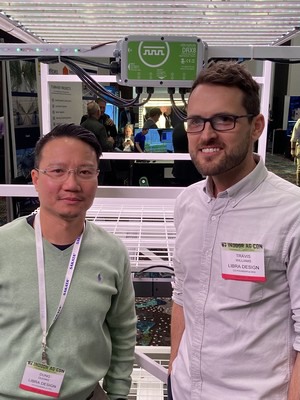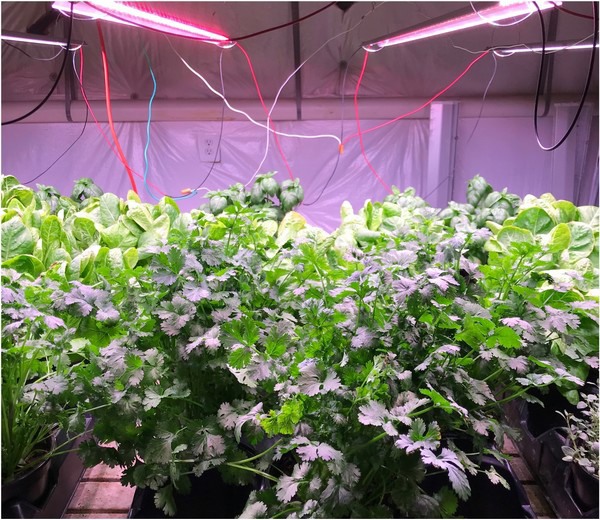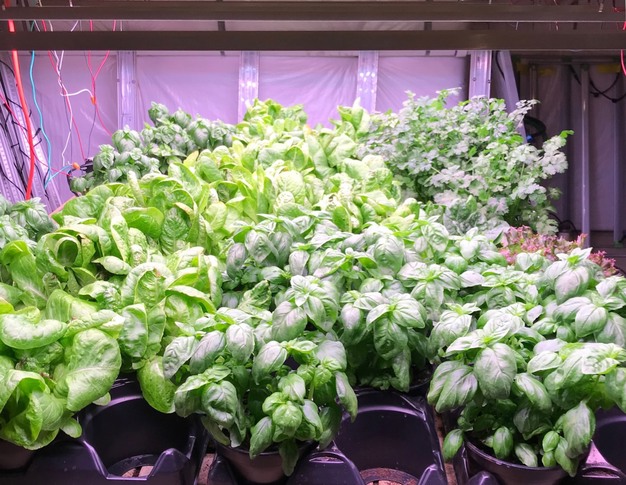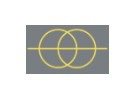The horti LED space was initially much like the wild west, with companies trying to get a piece of the emerging indoor growing industry by making big claims on a technology that wasn’t ready to deliver on what they promised. “There were a lot of question marks on LED tech, and many companies were misguiding growers,” says Travis Williams, co-founder of Libra Design. “Things really peaked in 2015, with frustrated growers having spent significant capital for a promising yet unproven technology.” In that year, Travis joined BML Horticulture, a start-up LED company based in Austin, TX, where he met Libra’s other co-founder, Dung Duong. Dung was BML’s Chief Innovation Officer and co-founder and the co-founder of the predecessor LED company, Illumitex.

There, Travis and Dung found a shared passion for seeing the controlled-environment agriculture (CEA) industry succeed. Dung views CEA as a solution to food insecurity, while Travis believes CEA is a solution to many of our environmental problems. While they knew LED technology would play a key role in CEA, they saw it was stifled by an increasing skepticism throughout the growing community.
Disappointed with the lighting industry’s lack of transparency and accountability in helping growers make informed purchase decisions, Travis says he re-branded BML Horticulture to Fluence Bioengineering. With a focus on science and substantiation coupled with breakthrough LED solutions, the new company would go on to become the leading LED provider to vertical farms and greenhouse growers in North America, eventually getting acquired by Osram in 2018 and then again by Signify earlier this year in 2022.
The LED cost barrier
While Travis and Dung helped get LED solutions to the point where they are today, they found themselves still dissatisfied with the lack of affordable, high-quality options for growers. “When growers are building, say, a greenhouse or a vertical farm, the biggest barrier is cost,” Travis says. “But it doesn’t need to be.” When the two reconnected in 2021, this became the founding principle of Dung and Travis’ new company: Libra Design. “This cost barrier happens because most companies are value-based,” Travis points out. As in, how much money a company can charge a grower based on the value they are providing. “This includes, for instance, calculating how much money a grower will save with reduced power consumption and how much additional revenue a grower will make due to increased production. Then they calculate a simple payback to justify the price for LED products,” he explains.

Travis and Dung believe a better way is possible, especially considering the importance of growers around the world. “These are the people growing the food that ends up on our table,” Dung says. “We should support them in any way possible to allow them to do their job.” And that’s where Libra Design comes into play. “With our mission to advance CEA, we customize lighting solutions based on each grower’s needs, and the price is then based on their components and features. It’s transparent and function-based, not value-driven.” But how can they do that? “We have been active in this space for such a long time, and we know the ins and outs of the supply chain and what growers need out of a lighting solution. Thanks to our knowledge and network, we can design a bespoke fixture with high-quality components at a greatly reduced cost,” says Dung.
Something more than that
But cost isn’t everything. Quality is indeed a great concern for growers. “And that’s one of our pillars as well,” Dung continues. “Everything we make is 100% designed in-house from the ground up based on our insight gained over the past couple of decades. We know what works and what doesn’t and use that knowledge to develop the optimal LED platform.” Dung and Travis have developed two base LED modules, one for vertical farms and one for greenhouses, now certified to the latest UL8800 standard. “These two modules are the perfect showcase of what we can do. Over the past year, during product development, we had a couple of pilot customers, and the first one recently got back to us, and the results were fantastic. They recorded reduced power consumption and increased yields, but what was pleasantly striking as they had zero product failures,” says Travis with a big smile on his face. “In fact, none of our pilot customers experienced quality issues. You’d expect some product failures from a pilot customer, but zero? That’s something we are really proud of.”

Component-agnostic
Dung and Travis continue to explain that Libra Design operates with a 5-phase process. “Because we customize our LED modules to each client’s need, we do not carry off-the-shelf inventory. Instead, we go through a process that starts with their design,” Travis says. “We meet with the customer and understand their operation, cultivation, and business strategy. By focusing on all three aspects, including an understanding of their budget, we come up with design proposals. From there, we work with each client to develop their unique lighting solution from pre-production to production. All in all, it’s about 6-7 months from design to delivery, depending on the complexity of the project, which we find aligns well with most growers’ schedules as we interoperate with their engineering, HVAC, and structural teams.”
While food production may be the primary focus, Libra is equally passionate about supporting the cannabis industry. “We are strong advocates of the cannabis industry and have made countless friends in the community over the years,” said Travis. “Not only that but the explosion in new agtech systems and methods over the past decade can largely be attributed to cannabis producers. We are eager to support the cannabis industry transition to more efficient, affordable LED technology as much as we are the food industry.”
For the time to come, the plan for Libra Design is to promote CEA and transition LED technology into the status quo. “The more growers we serve, the closer we get to achieving our mission by helping indoor, and greenhouse farming succeed,” Travis says. “While our costs are already well below what most expect to pay for a high-performance LED system, expanding to more growers will only help us continue to drive the costs down.” The larger plan is to fully replace HPS with LED. “We have already proven LED is a superior technology to HPS,” says Dung. “Our goal now is to prove it can be just as affordable.”
For more information:
Libra Design
[email protected]
libradesign.org
